Series 1: Mary of Magdala encounters the Risen Christ. St John 20
The Gospel writers focus on the life-changing effect of encounters with the Risen Christ, revealing the intimacy and sensitivity with which he listens, heals, and then challenges people to move on.
I therefore found myself drawn to paint a series exploring the link between people before and after encountering the Risen Christ; trying to present them in a way that might reveal a challenge for us today.
I began with two people who expressed themselves through tears: Peter and Mary of Magdala. First came a painting of Peter's distraught face as he realized the full impact of his denial of Jesus. Then the tears of Mary of Magdala when she was left on her own outside the empty tomb...
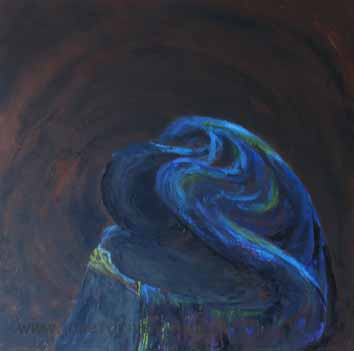 |
Mary of Magdala weeping outside the tomb
|
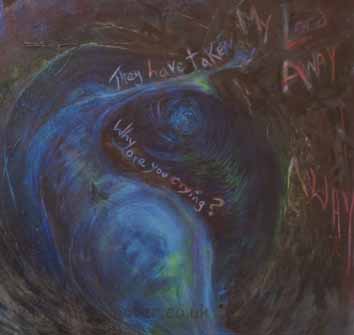 |
Detail from: "They've taken my Lord away..."
|
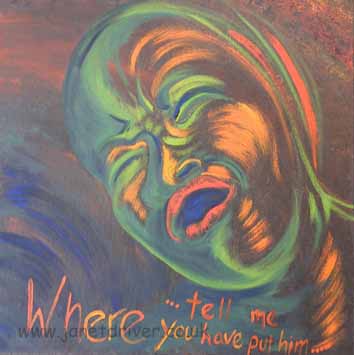 |
"Where have you put him?"
|
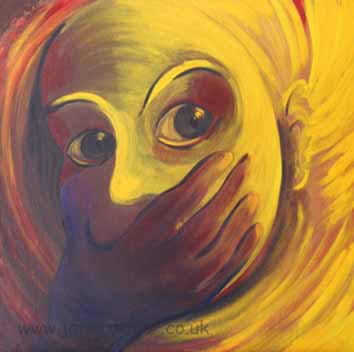 |
But the Risen Christ cuts right through her obsession, Calling her by name..."Mary"... |
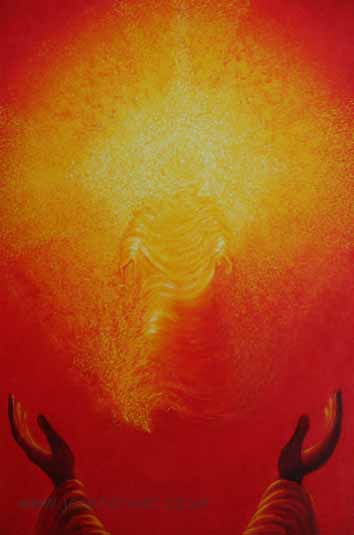 |
"Rabbouni" |
|
Over the years since studying Theology I have often puzzled over our Greek tutor's comment that "Rabbouni" was a word hardly ever used except in Jewish prayers, when addressing God. So perhaps Mary had a profound experience of the glory of God in her recognition of the Risen Christ. How, then, could this be expressed in a painting? It clearly needed to be a very joyful painting, but just then I was going through a time of grief and darkness. Surely this painting would have to wait... I waited for several months before finally I felt the time had come to make the attempt. The amazing thing was that it gradually grew as it was painted. I began by experimenting with several layers of red and yellow, hoping to achieve a rich glowing light from which a figure might emerge and yet also remain hidden. Then the foreground hands were painted almost life-size in the hope that the viewer would feel drawn into the picture. I hoped those raised hands might invite a response, an interaction, an empathy with the experience of Mary of Magdala as she recognizes the Risen Christ. I tried to show a sense of the wonder and awe that I imagine she felt... of Jesus coming towards her, raising his hands in joyful response to her recognition of who he is. And above all, I hoped to paint it in such a way that the viewer would be drawn right into the picture, to share in her joy. | |
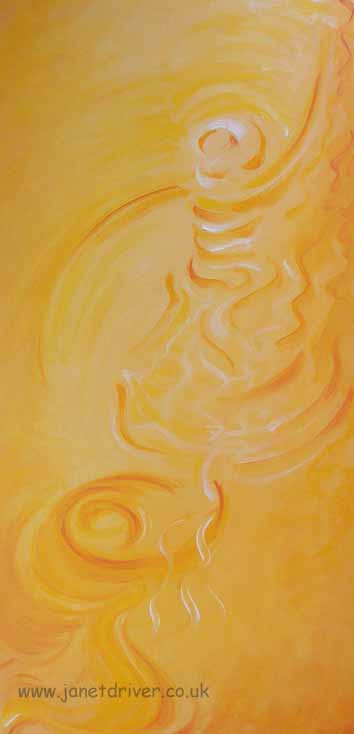 |
"Don't cling to me..." I have often been asked Why would someone like Jesus ever say 'Don't touch me'... ? It doesn't fit in with his touching the untouchable leper, for example...and women often feel quite hurt by the numerous paintings (by male artists) on the theme "Noli me tangere," where the Risen Christ is abruptly turning and backing away from the rather amorous advances of Mary of Magdala. There is no Biblical evidence whatever for this interpretation...but it has sadly remained entrenched in people's minds! The original Greek should be more accurately translated as "Don't cling to me," which surely makes more sense... the Risen Christ needs to move on...and so does she... |
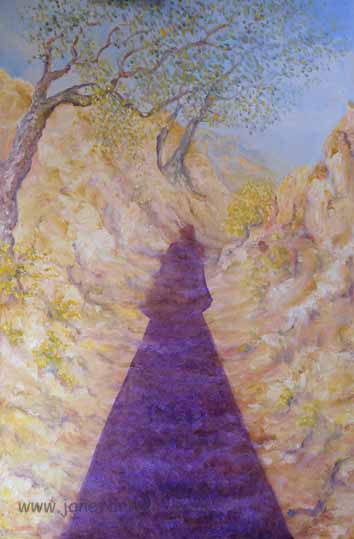 |
"...Go and tell..." Having puzzled for some time over how to paint this, the idea came to me whilst walking very early one morning, just as the sun was rising. I was surprised how long my shadow was as it stretched way out in front of me along the narrow pathway... and suddenly I could almost "see" Mary of Magdala setting out, back to wherever the disciples were hiding, with the light of Christ behind her, illuminating her path... In this painting we are invited to take this journey of Mary of Magdala as a symbol for our own journey through life, with the light of Christ illuminating the way ahead.... |
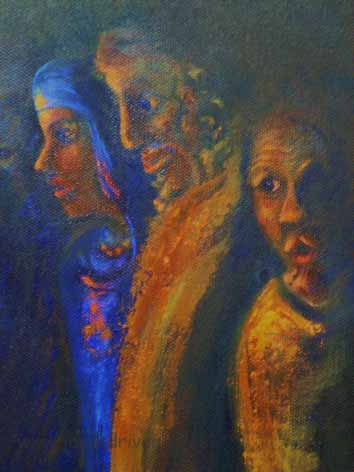 |
...and what happened when Mary found them? I imagine they were unable to take it in... as St Luke says "They thought it was an idle tale / pure nonsense..." (Luke 24 v 11) but...maybe...just maybe...she prepared the way so that they could recognise Jesus when he appeared to them later that day...? |
If you have any comments please email me.

